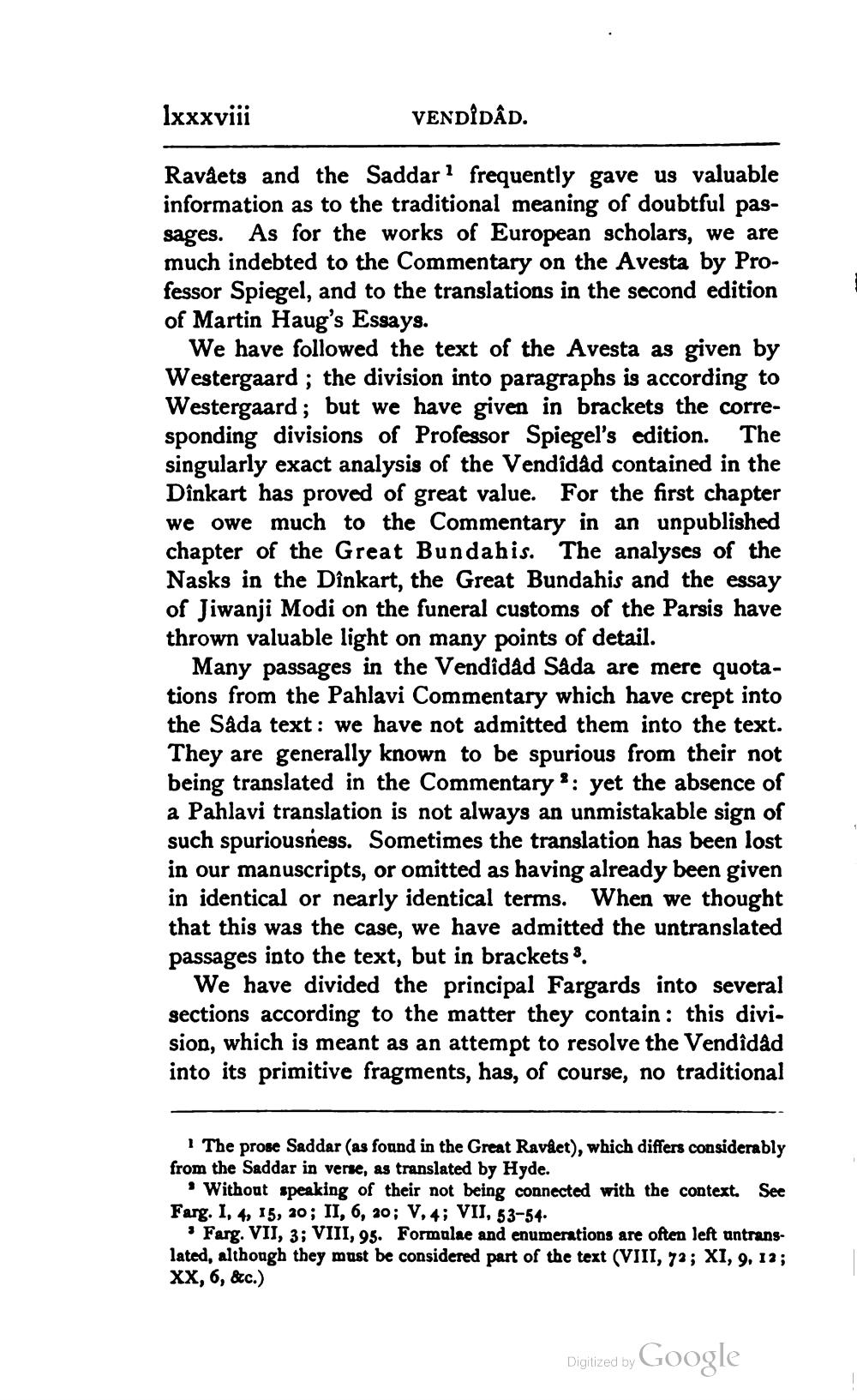________________
lxxxviii
Ravâets and the Saddar1 frequently gave us valuable information as to the traditional meaning of doubtful passages. As for the works of European scholars, we are much indebted to the Commentary on the Avesta by Professor Spiegel, and to the translations in the second edition of Martin Haug's Essays.
VENDÎDÂD.
We have followed the text of the Avesta as given by Westergaard; the division into paragraphs is according to Westergaard; but we have given in brackets the corresponding divisions of Professor Spiegel's edition. The singularly exact analysis of the Vendîdâd contained in the Dînkart has proved of great value. For the first chapter we owe much to the Commentary in an unpublished chapter of the Great Bundahis. The analyses of the Nasks in the Dînkart, the Great Bundahis and the essay of Jiwanji Modi on the funeral customs of the Parsis have thrown valuable light on many points of detail.
Many passages in the Vendidâd Sâda are mere quotations from the Pahlavi Commentary which have crept into the Sâda text: we have not admitted them into the text. They are generally known to be spurious from their not being translated in the Commentary: yet the absence of a Pahlavi translation is not always an unmistakable sign of such spuriousness. Sometimes the translation has been lost in our manuscripts, or omitted as having already been given in identical or nearly identical terms. When we thought that this was the case, we have admitted the untranslated passages into the text, but in brackets 3.
We have divided the principal Fargards into several sections according to the matter they contain: this division, which is meant as an attempt to resolve the Vendîdâd into its primitive fragments, has, of course, no traditional
1 The prose Saddar (as found in the Great Ravâet), which differs considerably from the Saddar in verse, as translated by Hyde.
'Without speaking of their not being connected with the context. See Farg. I, 4, 15, 20; II, 6, 20; V, 4; VII, 53-54.
'Farg. VII, 3; VIII, 95. Formulae and enumerations are often left untranslated, although they must be considered part of the text (VIII, 72; XI, 9, 12; XX, 6, &c.)
Digitized by
Google




